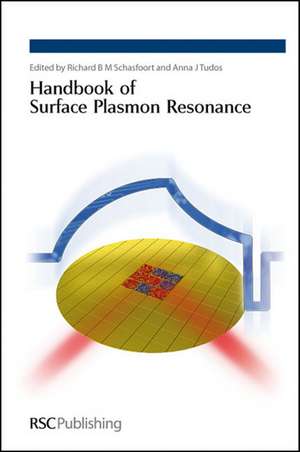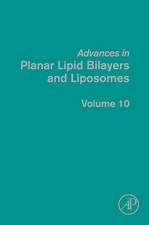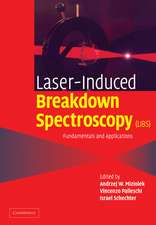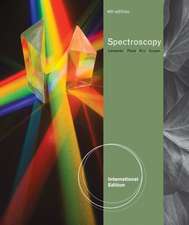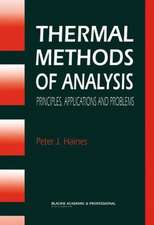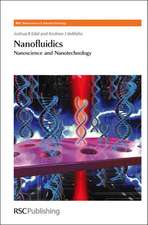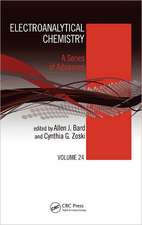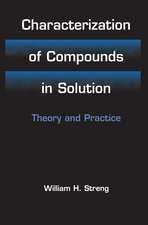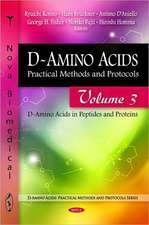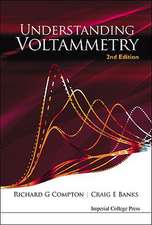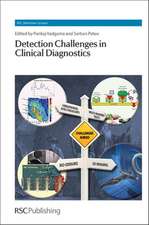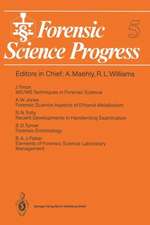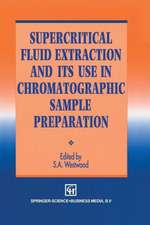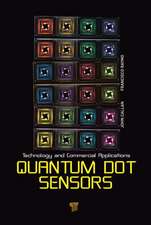Handbook of Surface Plasmon Resonance
Editat de Richard B. M. Schasfoort, Anna J. Tudosen Limba Engleză Hardback – 31 mar 2008
Surface plasmon resonance (SPR) plays a dominant role in real-time interaction sensing of biomolecular binding events. This book focuses on a total system description including optics, fluidics and sensor surfaces. It covers all commercial SPR systems in the market. It is the first of its kind and fills a gap in the technical literature as no other handbook on SPR is currently available. The final chapter discussed new trends and a vision is given for future developments and needs of the SPR market. This excellent handbook provides comprehensive information with easy to use, stand-alone chapters and will be of great use to anyone one working with or affiliated to the technology.
Preț: 1128.78 lei
Preț vechi: 1312.54 lei
-14% Nou
Puncte Express: 1693
Preț estimativ în valută:
216.02€ • 234.56$ • 181.45£
216.02€ • 234.56$ • 181.45£
Carte tipărită la comandă
Livrare economică 22 aprilie-06 mai
Preluare comenzi: 021 569.72.76
Specificații
ISBN-13: 9780854042678
ISBN-10: 0854042679
Pagini: 403
Dimensiuni: 162 x 240 x 28 mm
Greutate: 0.8 kg
Editura: Royal Society Of Chemistry
ISBN-10: 0854042679
Pagini: 403
Dimensiuni: 162 x 240 x 28 mm
Greutate: 0.8 kg
Editura: Royal Society Of Chemistry
Cuprins
Chapter 1: Introduction to Surface Plasmon Resonance; Chapter 2: Physics of Surface Plasmon Resonance; Chapter 3: SPR Instrumentation; Chapter 4: Kinetic Models Describing Biomolecular Interactions at Surfaces; Chapter 5: Kinetic and Thermodynamic Analysis of Ligand-Receptor Interactions: SPR Applications in Drug Development; Chapter 6: Surface Chemistry in SPR Technology; Chapter 7: Measurement of the Analysis Cycle: Scanning SPR Microarray Imaging of Autoimmune Diseases; Chapter 8: Advanced Methods for SPR Imaging Biosensing; Chapter 9: Surface Plasmon Fluorescence Techniques for Bioaffinity Studies; Chapter 10: SPR Imaging for Clinical Diagnostics; Chapter 11: The Benefits and Scope of Surface Plasmon Resonance-based Biosensors in Food Analysis; Chapter 12: Future Trends in SPR Technology
Notă biografică
Richard B.M. Schasfoort is currently head of the Biochip Group at the University of Twente (UT), the Netherlands, as well as director of the BioMultianalyte Detection program, strategic research orientation at MESA+ UT. He earned his MSc in biotechnology from the University of Groningen, the Netherlands and his PhD in biosensors. His research interest is focused on the coupling of lab-on-a-chip liquid handling to bio- and chemical sensors for the determination of multiple analytes in complex matrices. Relevant application areas include disease monitoring, biomarkers and food safety. Richard Schasfoort is founder of IBIS Technologies BV that has committed itself to SPR imaging technology. Richard B.M. Schasfoort has (co-)authored about 60 peer reviewed articles and 15 patent applications and was in 2002 awarded a grant for young scientists (vernieuwingsimpuls) by Netherlands Organisation for Scientific Research (NWO). Dr Tudos was senior scientist at the Biochip Group, University of Twente and now Shell Global Solutions International BV, P.O. Box 38000, 1030 BN Amsterdam, the Netherlands, She earned her PhD at the University of Amsterdam in analytical chemistry. Her post doctoral study at Iowa State University focused on electrochemical detection in miniaturized devices. Her major interest is translating scientific concepts, like SPR-based sensors or lab-on-a-chip devices into products for example for application in the food, health or defence industry. Dr Tudos is member of the editorial board of Food Chemistry (Elsevier) and head of the Analytical Chemistry Section of the Royal Dutch Society of Chemists.
Textul de pe ultima copertă
Surface plasmon resonance (SPR) plays a dominant role in real-time interaction sensing of biomolecular binding events. Although the last decades have seen the birth of various books on sensors and biosensors with some mention of surface plasmon resonance, such a comprehensive work on SPR covering the issues relevant for the interested student or the practicing researcher has long been awaited. The Handbook of Surface Plasmon Resonance covers all relevant aspects of present technology spanning a bridge between theory, instrumentation and applications. The book provides a thorough theoretical introduction, including kinetic models of biomolecular interactions as well as a practical guide for assay development. The book describes the instrumentation of SPR in terms of optics, fluidics, surface chemistries and kinetics with an easy-to-follow guide of how to use the technique providing relevant applications. The history of SPR, new trends, and a vision of future developments and needs of the SPR market are given. The potential of SPR is revealed by showing highly exciting and unique opportunities for unraveling the functional relationships of complex biological processes. The book is a comprehensive source of information with easy to use, stand-alone chapters, and will be essential for scientists in industry and academia working with or affiliated to the technology. Intended for a wide audience, The Handbook of Surface Plasmon Resonance is also students aspiring to use the technology, and the wide public interested in SPR as a phenomenon and in its applications.
Descriere
Surface plasmon resonance (SPR) plays a dominant role in real-time interaction sensing of biomolecular binding events.The book is intended as a hands-on guide for all interested in SPR
